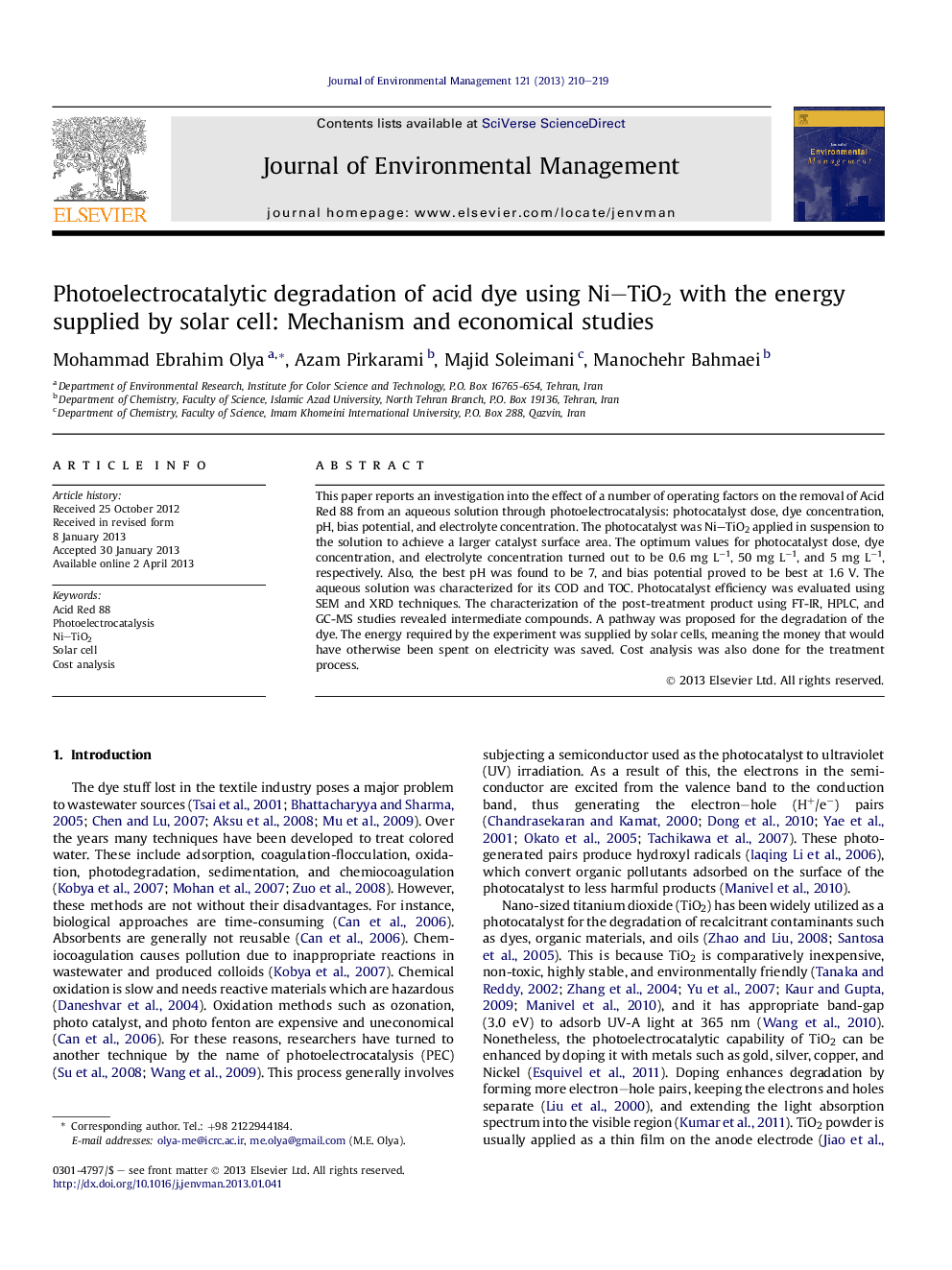| Article ID | Journal | Published Year | Pages | File Type |
|---|---|---|---|---|
| 1056371 | Journal of Environmental Management | 2013 | 10 Pages |
This paper reports an investigation into the effect of a number of operating factors on the removal of Acid Red 88 from an aqueous solution through photoelectrocatalysis: photocatalyst dose, dye concentration, pH, bias potential, and electrolyte concentration. The photocatalyst was Ni–TiO2 applied in suspension to the solution to achieve a larger catalyst surface area. The optimum values for photocatalyst dose, dye concentration, and electrolyte concentration turned out to be 0.6 mg L−1, 50 mg L−1, and 5 mg L−1, respectively. Also, the best pH was found to be 7, and bias potential proved to be best at 1.6 V. The aqueous solution was characterized for its COD and TOC. Photocatalyst efficiency was evaluated using SEM and XRD techniques. The characterization of the post-treatment product using FT-IR, HPLC, and GC-MS studies revealed intermediate compounds. A pathway was proposed for the degradation of the dye. The energy required by the experiment was supplied by solar cells, meaning the money that would have otherwise been spent on electricity was saved. Cost analysis was also done for the treatment process.
► Ni–TiO2 was used as the photocatalyst applied to the solution in suspension. ► The energy required by the experiment was supplied by solar cells. ► Cost analysis was performed for the treatment process.
